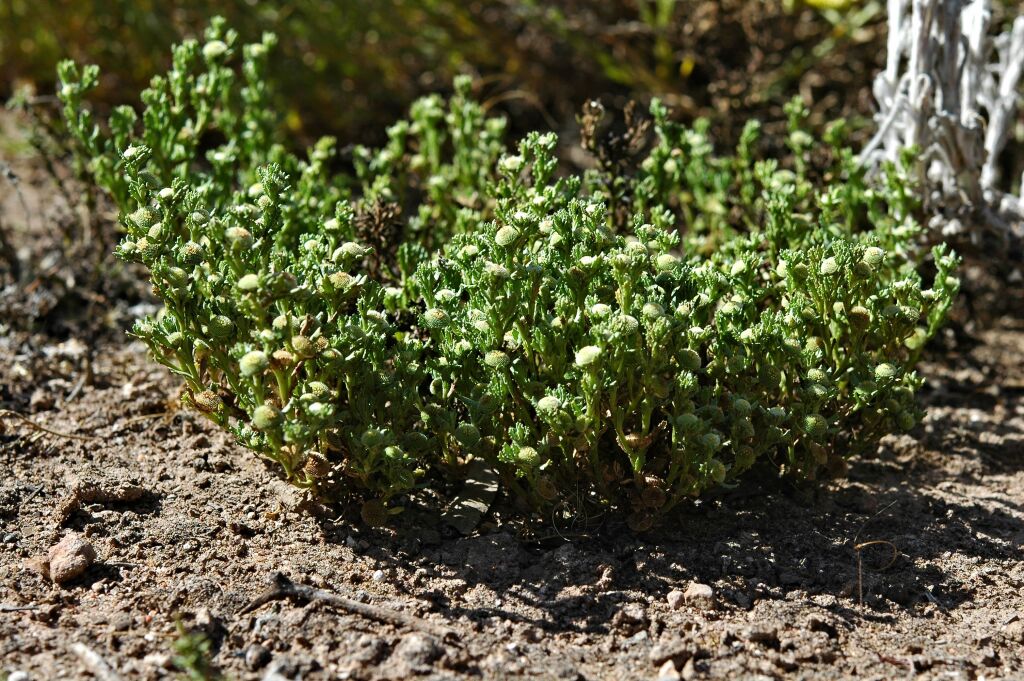Centipeda crateriformis subsp. crateriformis
Annual to c. 20 cm high; branches prostrate to ascending, but sometimes erect, glabrescent to conspicuously cottony in axils and stem apices. Leaves more or less narrowly obovate to spathulate, 3–8(–12) mm long, 2–4(–6) mm wide, surfaces resin-dotted. Capitula more or less hemispherical to bowl-shaped at anthesis, 3.5–7 mm diam., solitary, sessile or minutely peduculate; involucral bracts ovate to obovate, entire or with minutely ruminate membranous margins, 1.5–4 mm long; receptacle flat to very slightly concave or convex; female florets c. 100–200, corollas 0.4–0.7 mm long; bisexual florets (7–)12–22, corollas c. 0.8 mm long. Fruiting heads remaining intact until long after stems senesce. Cypselas linear, (1.4–)1.8–2.5 mm long; ribs 4–5, smooth or rarely scabridulous, smooth or rarely scabridulous, with sparse antrorse, appressed, sometimes apically thickened hairs; intervening faces with sparsely scattered vesicular trichomes and sometimes with fine ribs; apex obtuse extending as a thickened, spongy portion a third of the cypsela length. Flowers most of the year.
VRiv, MSB, RobP. Also WA, NT, SA, Qld, NSW. In Victoria grows in clay soils of seasonally inundated areas and depressions in regions surrounding the Murray River from Kerang through to South Australia.
 Spinning
Spinning


